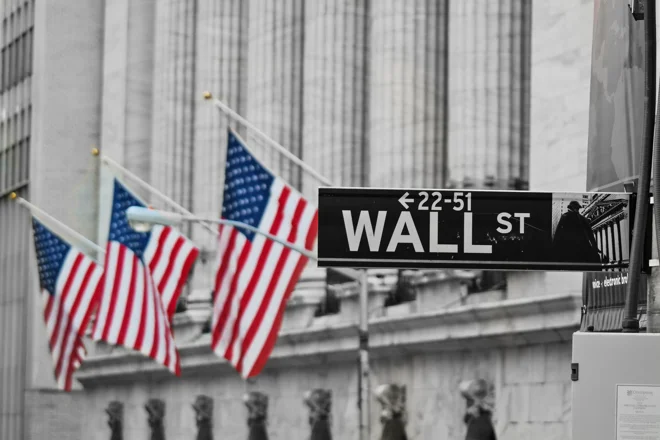The key strategy for economists to get attention and avoid sounding ‘too consensus’ is to assign high probabilities to events without taking them as base case. Saying that something has a 30-40% probability of happening sounds high enough to make it an important risk to watch but, if it doesn’t happen, chances were always less than even to begin with. A better way is to frame a debate and look at the pros and cons of both sides’ arguments. Take inflation. There are two camps: those who believe we’re set for a secular pickup in inflation and those who believe disinflation will ultimately remain well entrenched. To us, extrapolating from the recent inflation spike is fake news. But this doesn’t mean that inflationary pressures will never intensify: looking beyond near-term shortages and catch-up spending – which we think are the main drivers of the spike – we do see a healthy economy supporting positive inflation rates and gradually rising bond yields over time. Our Counterpoint 2021 mid-year update goes through the key inflation determinants across different time horizons, along with our view on central banks’ reaction function and the impact on interest rates and markets as a whole.
Better pay? Selectively: Remarkably, wage growth didn’t slow following the pandemic shock, though so far it hasn’t taken off either. It’s accelerating especially for low-skilled workers, which have been affected by Covid-19 and are now in short supply given virus-related caution, restrictions and fiscal support disincentivising job search. As vaccination progresses, activity restarts and subsidies are discontinued, these shortages should ease and pay pressure for these types of workers diminish. As and when capacity utilisation rises further and, therefore, wages pick up more broadly, we’d see a higher probability of rising inflation, especially if it were to feed into higher inflation expectations – just like there’s an economic cycle, there’s an inflation cycle too. But, even then, automation will likely restrain pay increases. We hear about companies reporting higher selling prices these days, but some of them are also beginning to report plans to boost efficiency and cut costs.
More enduring pressure? Possibly: We believe that the spike in US inflation is mostly due to statistical effects (last year’s prices were very weak), commodity price pass-through and supply bottlenecks in the context of stronger demand as economies reopen. While the magnitude and duration are uncertain, this rise looks temporary to us. Over time, we expect inflation rates to converge again towards central bank targets. We can see how shortages and pent-up demand drive inflation temporarily above the Fed’s target. Just look at how much more expensive shipping a container from China to Europe and the US has become. How long this will last remains to be seen. But we also see that several upstream bottlenecks may have started to peak: US used car auction prices seem to have stabilised in late May; lumber prices have dropped sharply; copper prices, in line with our forecast, have started to decline; emergency fiscal benefits are expiring.
Here’s why this matters:
Fed policy | First thing first: Further out, labour markets are only likely to push wages higher at a faster pace when labour scarcity becomes an issue, which we don’t expect to happen for at least a few quarters. This is why we think the major central banks won’t hike interest rates for quite a while. There’s no particular reason for the Fed, given its new-ish average inflation targeting framework, to continue to project policy rates close to zero in the context of a strong economy and inflation, following the ongoing spike, staying at (just above) target. But there’s no particular reason to hike too soon either. The near-term focus is all about how and when to start tapering the central bank’s asset purchases. We would expect an announcement over the next few months, to execute from 2022 over one year. Only at that point, and after a pause to take stock, rate hikes are likely.
Real assets | Just in case: Our central bank rate forecast is more dovish than market pricing. For quite a while, our base case has been that the Fed would hike in 2023. But we don’t believe that the probability of a hike in 2022 is that high. A scenario where the European Central Bank hikes rates looks even more remote. However, the tension between strong data and the need to ensure easy financial conditions and affordable funding may trigger bouts of volatility, especially as markets may stay focused on near-term inflation risks in the context of central banks possibly remaining ‘behind the curve’. This may affect long-duration assets, including tech stocks, every now and then. It may also lead to gyrations in longer-term inflation expectations, a potential bid for real assets including equities, private markets and inflation-linked bonds, and inflation hedges like gold and commodities.
Meanwhile, recovery continues…
Heading into summer: The purchasing managers’ indices should have stayed at elevated levels in the US this month too, though expectations are for the headline figures to have moderated slightly. A similar dynamic could perhaps play out in the UK, with full reopening delayed by one month. The euro area should see solid numbers too, including in national surveys such as the German Ifo business climate, as improved vaccine rollouts and falling case numbers have allowed the easing of many restrictions. Across countries, though, any gain is likely to be driven by activity recovering further in services, while longer delivery times and supply disruptions could perhaps negatively impact manufacturing. On the inflation front, US core PCE is likely have accelerated to about 3.5%, but this won’t be much of a surprise to investors, given the spike in the CPI figures released earlier and, following the latest policy meeting, the Fed now projecting rate hikes in 2023. The Bank of England is likely to remain on hold.
Daniele Antonucci | Chief Economist & Macro Strategist
This document has been prepared by Quintet Private Bank (Europe) S.A. The statements and views expressed in this document – based upon information from sources believed to be reliable – are those of Quintet Private Bank (Europe) S.A. and are subject to change. This document is of a general nature and does not constitute legal, accounting, tax or investment advice. All investors should keep in mind that past performance is no indication of future performance, and that the value of investments may go up or down. Changes in exchange rates may also cause the value of underlying investments to go up or down.
Copyright © Quintet Private Bank (Europe) S.A. 2021. All rights reserved.





